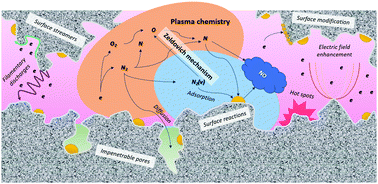From the Birkeland–Eyde process towards energy-efficient plasma-based NOX synthesis: a techno-economic analysis
Abstract
Plasma-based NOX synthesis via the Birkeland–Eyde process was one of the first industrial nitrogen fixation methods. However, this technology never played a dominant role for nitrogen fixation, due to the invention of the Haber–Bosch process. Recently, nitrogen fixation by plasma technology has gained significant interest again, due to the emergence of low cost, renewable electricity. We first present a short historical background of plasma-based NOX synthesis. Thereafter, we discuss the reported performance for plasma-based NOX synthesis in various types of plasma reactors, along with the current understanding regarding the reaction mechanisms in the plasma phase, as well as on a catalytic surface. Finally, we benchmark the plasma-based NOX synthesis process with the electrolysis-based Haber–Bosch process combined with the Ostwald process, in terms of the investment cost and energy consumption. This analysis shows that the energy consumption for NOX synthesis with plasma technology is almost competitive with the commercial process with its current best value of 2.4 MJ mol N−1, which is required to decrease further to about 0.7 MJ mol N−1 in order to become fully competitive. This may be accomplished through further plasma reactor optimization and effective plasma–catalyst coupling.



 Please wait while we load your content...
Please wait while we load your content...